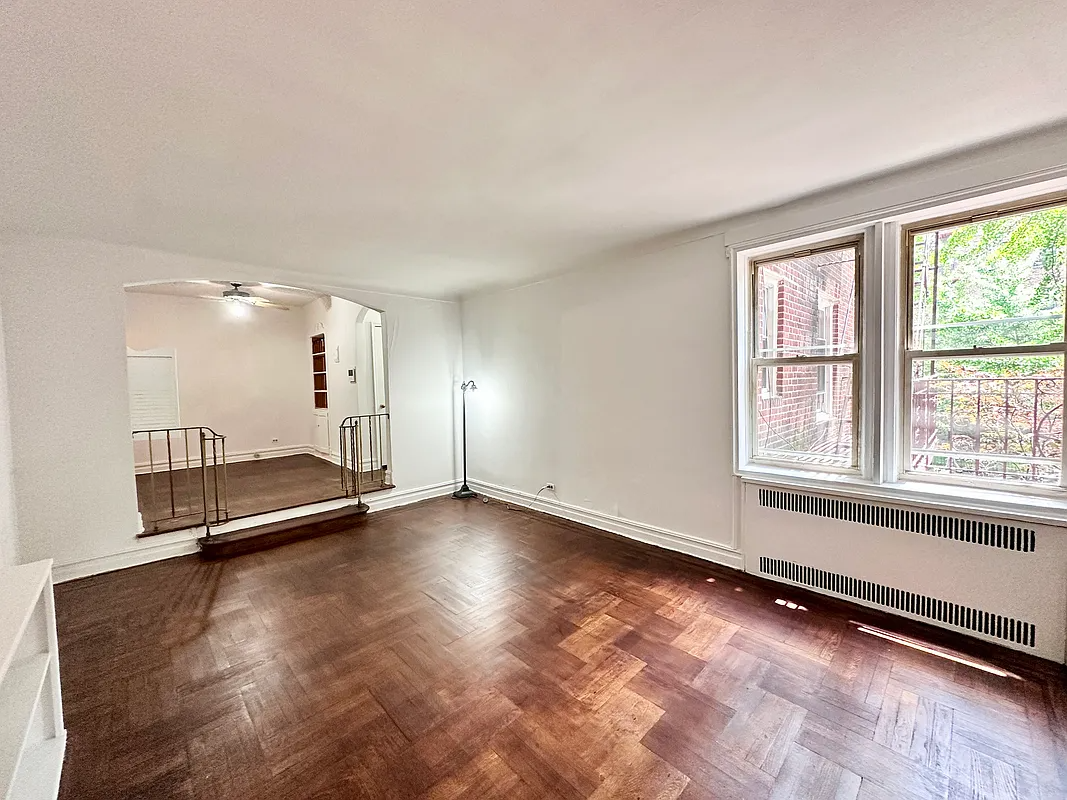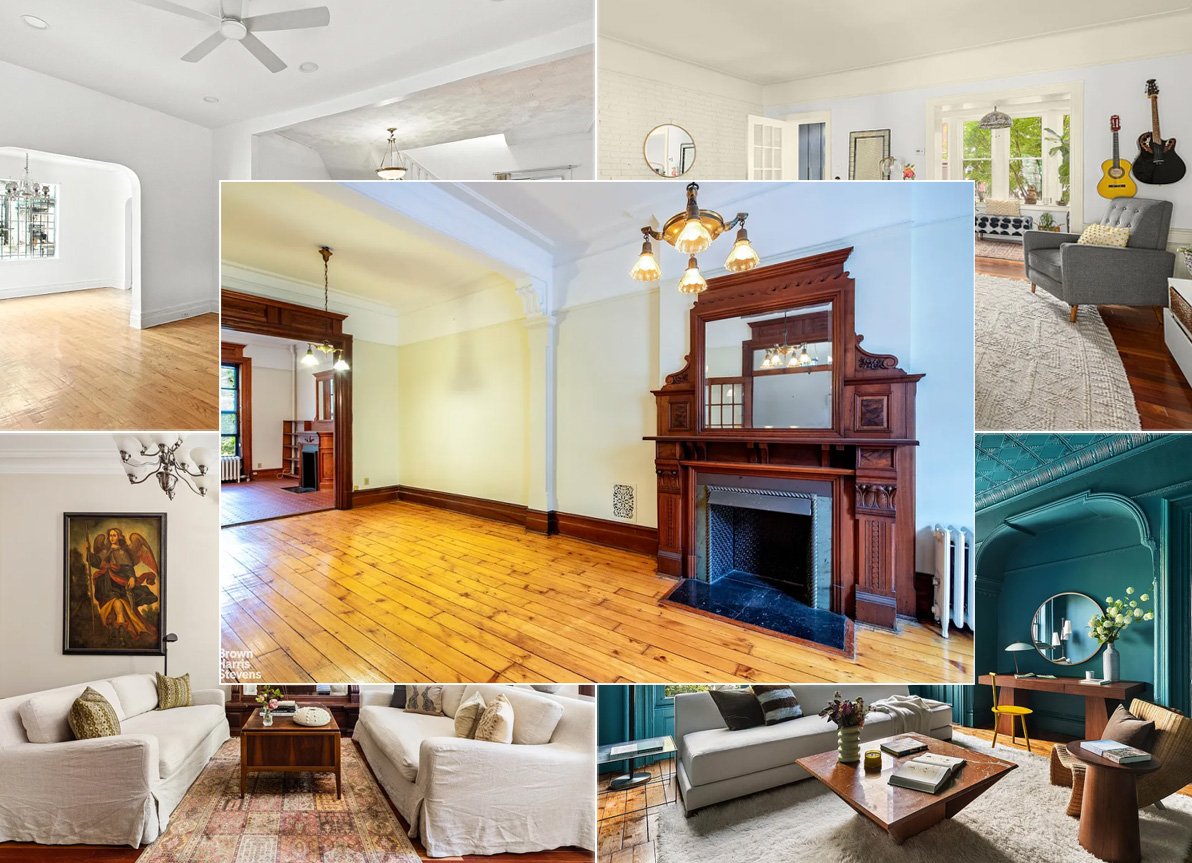Renovation Surprise: Stained Glass in the Floor
Here’s an email that came in from a Brooklyn Heights couple who run a design-build business called Dwellings Ltd and are in the process of renovating their own newly-purchased co-op. I wanted to share an architectural find my husband and I uncovered during the demolition phase of a coop apartment we recently purchased. The apartment…


Here’s an email that came in from a Brooklyn Heights couple who run a design-build business called Dwellings Ltd and are in the process of renovating their own newly-purchased co-op.
I wanted to share an architectural find my husband and I uncovered during the demolition phase of a coop apartment we recently purchased. The apartment is in a stunning limestone building in Brooklyn Heights with the original mahogany trim, plasterwork and mosaic tiled hallway still intact. It’s one of the main reasons we were drawn to the apartment—this house was really something in its day. The apartment is on the second floor and there was what appeared to be an unused shaft between a closet and the kitchen that we could use as additional space. There was no evidence of the shaft in the apartment above or below. We figured it was the remnants of a very large dumbwaiter. After making the proverbial inspection hole, however, we discovered the interior was finished plaster and wainscot trim. Clearly not something one would have seen inside a dumbwaiter. It was also very large (3′ by 6′) and a ton of construction debris that had been piled inside the shaft from the renovation of the apartment above many years before.
 Progressive removal of the debris during demolition proved that what we took for a floor was actually a glass panel. After completing the cleanup, we discovered the remnants of an amazing large stained-glass panel which would have served as artwork for the parlor floor below, lit from the shaft that at one time went clear up to the roof. In addition, there were windows into the shaft which would have provided fresh air to the center of the building. We were both happy to have found this piece and at the same time saddened that it was in the condition it was in. Why it wasn’t removed and put to good use at the time the shaft was run with duct work and closed up we can’t understand. We’ll attempt to resurrect it in some form, either cleaned up and left as the artifact it is, or disassembled and reconfigured into a more modest smaller piece. See the attached photos for what is left of this once-impressive large piece of artwork. Light under the small pieces of glass show many of the individual pieces have beautiful motifs painted on them—leaves, fruit, and geometric forms.
Progressive removal of the debris during demolition proved that what we took for a floor was actually a glass panel. After completing the cleanup, we discovered the remnants of an amazing large stained-glass panel which would have served as artwork for the parlor floor below, lit from the shaft that at one time went clear up to the roof. In addition, there were windows into the shaft which would have provided fresh air to the center of the building. We were both happy to have found this piece and at the same time saddened that it was in the condition it was in. Why it wasn’t removed and put to good use at the time the shaft was run with duct work and closed up we can’t understand. We’ll attempt to resurrect it in some form, either cleaned up and left as the artifact it is, or disassembled and reconfigured into a more modest smaller piece. See the attached photos for what is left of this once-impressive large piece of artwork. Light under the small pieces of glass show many of the individual pieces have beautiful motifs painted on them—leaves, fruit, and geometric forms.
Another find during demolition was…
…a well constructed and hinged trap door set into the floorboards—clearly a place in the master bedroom suite where the man or lady of the house may have kept something valuable hidden. We always joke about finding treasure in a secret hiding place in these old buildings, and now we thought, here was the door to ours! Sadly, however, nothing but dust and wood scraps proved to be inside (see photos attached). Oh well, guess we’ll just have to continue to play Lotto and dream.






FYI – I make stain glass floors (and more). Visit http://www.sanctuarybydesign.com to see some ideas!
Yes I have to agree. More posts on actual renovation stories, less on value of real estate developments.
Very cool. I love old finds like this.
Not as extravagant, but during renovations of our downstairs kitchen, we removed some hideous vinyl “wainscoting”. Beneath that we found wallpaper and some blue stenciling on the walls. The stencil was an abstraction of an elegant coffee or tea cup. It was very deco in its styling, and gives us some idea of the latest possible date the kitchen was originally built out.
Wow, what a find! My old home had a 2 story airshaft/skylight into the bathroom on the third floor, which otherwise would not have had any natural light. No stained glass however. The Victorians were very creative in directing light into spaces.
Thanks for sharing this. I agree with QR. This is much nicer than reading racist rantings or the sex starved musings of men looking for Park Slope girls. Let’s definitely have more of this!
Man, Brownstoner, you used to be all posts like this. Look how friendly the comments are, even. More please.
We have a tiny little compartment in the wall in my brownstone apartment. The landlord offered to remove the door and plaster over it before we moved in, and I cried No!
We don’t use it, but I’ve still got the secret hiding place the child inside me always wanted. Love it.
that is an interesting find. These panels are usually called “laylights”
they are the decorative panel that sit beneath the real “skylight” that keeeps out the rain etc. Sometimes these pieces of glasswork are also called “diffusers” because they diffuse the daylight.
Usually they are located at the top of the main staircase where they illuminate and decorate the stairwell.
Finding one in another location is pretty unusual. I love the safe too. Wall safes are more common finds than floor safes.
That is so cool!
great story! not often that one finds extra square footage in one’s home.